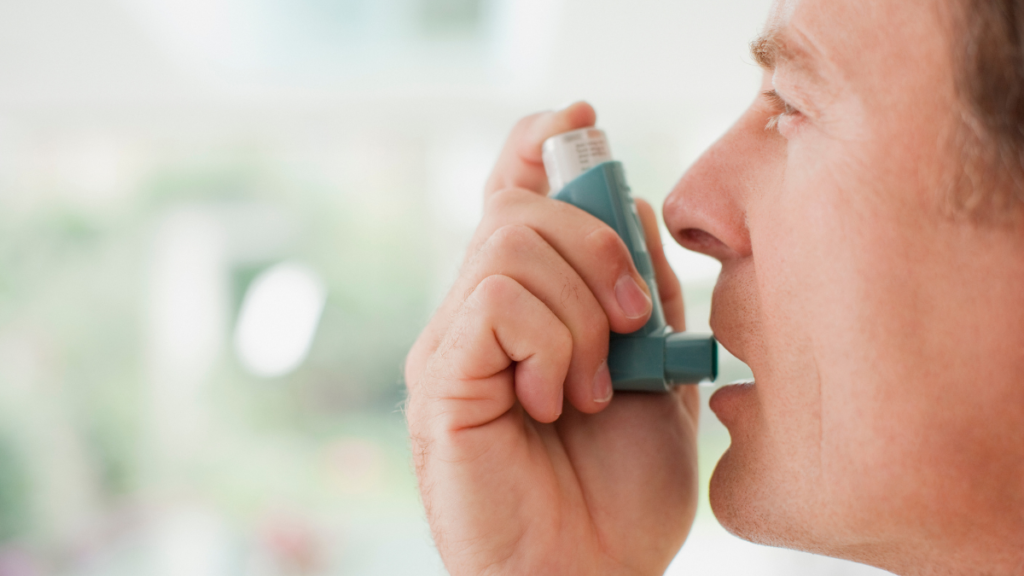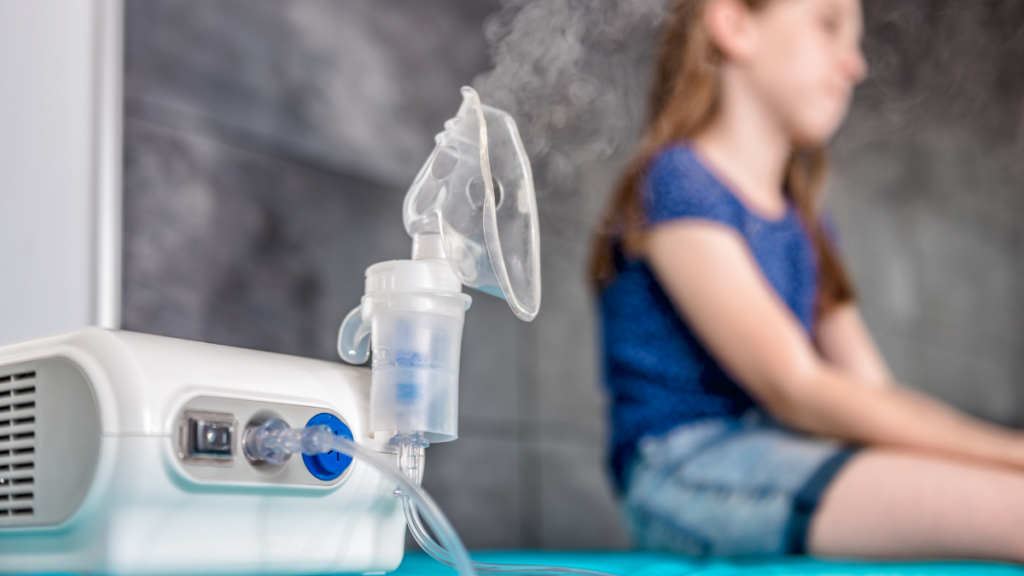While both inhalers and nebulizers deliver quick relief vaporized medicine for those with respiratory illnesses, these devices differ in how they deliver the medication. But what is the difference between the two?
Inhalers deliver short bursts of medicine quickly and easily via a portable, handheld device that is manually operated by the user. The most common type of inhaler is a metered-dose inhaler (MDI). However, inhalers are most often used incorrectly. Only about five percent of patients used a metered-dose inhaler (MDI) correctly. Improper use can make the medicine ineffective.
Alternatively, nebulizers turn liquid medication into an easily inhaled mist that is more efficiently delivered directly into the lungs. Nebulizers vary in type but rely on a power source, such as an electrical outlet or rechargeable battery to function. Nebulizers traditionally can take up to 10 minutes to deliver a dose of the medication. The new ultrasonic, portable mesh nebulizers are pocket-size devices that can deliver a full dose within 4 minutes.
What Does an Inhaler Do?
Inhalers are hand-held medical devices that deliver medicine directly to the lungs when a user inhales deeply. These devices are typically used by individuals with respiratory illnesses, such as asthma and COPD. Inhalers come in two types: metered-dose inhalers and dry powder inhalers.
Metered Dose Inhalers
Metered-dose inhalers, also known as MDIs or spray inhalers, work very much like aerosol cans. They deliver liquid medicine through a pressurized spray. Each spray is a single dose that individuals can use when they are having difficulty breathing. MDIs contain a finite amount of medicine and must be refilled when they are empty.
Dry Powder Inhalers
Dry powder inhalers (also called DPIs) use a powdered form of medicine that users inhale directly, without the assistance of a spray. This type of inhaler is often easier to use than MDIs though individuals may have to use more effort to inhale the powder.
What is a Nebulizer Machine?
Nebulizers are devices that mechanically vaporize medicine for respiratory illness patients. They are powered by either an electrical outlet or a lithium-ion battery. The two most common types of nebulizers are compressors and mesh nebulizers. Learn more about Nebulizer Machine here.
What are Jet Nebulizers?
One of the most common nebulizers, also known as an “atomizer” are jet nebulizers. These nebulizers are connected to a supply of compressed gas through the tubing. The compressed gas, usual oxygen, flows at a high velocity through a liquid medicine turning it into an aerosol to be inhaled. Currently, physicians prefer to prescribe Pressurized Metered Dose Inhaler (pMDI) for their patients, instead of a jet nebulizer as they produce lots of noise and are less portable.
On the other hand, jet nebulizers are commonly used for patients who have difficulty using inhalers. The patients who generally need jet nebulizers suffer from serious cases of respiratory diseases or severe asthma. The most significant advantage of a jet nebulizer is the low operational costs.
With several technological advancements, manufacturers have successfully reduced the weight of a jet nebulizer and started to label it as a portable jet nebulizer.
What are Ultrasonic Nebulizers?
Ultrasonic nebulizers were invented in 1965 and were an innovation for portable nebulizers.
An ultrasonic nebulizer has an electronic oscillator generator that produces high-frequency ultrasonic waves that cause vibrations of the piezoelectric element. In contact with a liquid reservoir, the vibrations can create sufficient vapor to produce an aerosol of the medicine.
One of the major advantages of an ultrasonic nebulizer is that it is very silent and very light.
What is a Mesh Nebulizer?
The vibrating mesh technology was discovered in 2005 which revolutionized the entire process for nebulizers.
These nebulizers use a membrane or a mesh of several thousand holes drilled with a laser. This membrane is placed on top of the liquid reservoir and the pressure releases a fine mist of droplets from the holes. The vibrating Mesh Technology is more efficient than ultrasonic nebulizers and can reduce the wastage of liquid for nebulizers.
Click here to find the best nebulizers.
Nebulizer vs Inhaler – Which One is Better?
While both nebulizers and inhalers are effective forms of treatment for respiratory illness, individuals may want to try both to find what works best for them. Patients can also consult with their doctor over what they think is the most effective form of treatment.
How Do Inhalers Work?
Metered-dose inhalers mix the medication with an aerosol so that a mist forms. The user simply removes the cap, shakes the inhaler for approximately 5 seconds, places the mouthpiece of the inhaler in their mouth, and presses the pump to release the missed dose of medication while breathing in slowly and deeply. Once the medicine is inhaled, users must hold their breath for approximately 10 seconds before exhaling to allow the medicine to reach the lungs effectively. Metered-dose inhalers are the most common with asthma patients.
Dry powder inhalers use capsules of dry powdered medicine. Depending on the type of DPI, users simply need to open, press, or twist their device to ready their medicine dose. Similar to MDIs, the user must place their mouth over the mouthpiece and inhale deeply and slowly. Prior to exhaling, they must hold their breath for approximately 10 seconds for maximum treatment effectiveness.
How Does A Nebulizer Machine Work?
Compressor nebulizers rely on compressed air. The user simply needs to place the mouthpiece in their mouth, turn the device on, and breathe normally. These models are typically used at home as they typically require a power source.
Mesh nebulizers are often more portable and rely on a vibrating mesh disc that disperses liquid medicine into equally sized droplets that the lungs can absorb more easily. Again, users simply need to place their mouth on the mouthpiece, turn the device on and breathe normally.
Difference Between a Nebulizer and an Inhaler
The most common issue with inhalers is incorrect to use. A recent study found that 84% of people incorrectly use their inhalers.
Inhalers require some practice to administer medicine properly, which may be difficult for small children or elderly patients with respiratory illnesses. Misuse can lead to ineffective treatment and an increase in respiratory illness episodes such as asthma attacks.
Nebulizers are more intuitive and easier to use. They are better suited to those who have found inhalers difficult to use or who feel they are not receiving a proper dose of medicine with inhalers. If traveling with a portable nebulizer, always be sure to have a backup battery or charging cable to ensure you can receive treatment wherever you are.
How Long After Nebulizer Can You Use Inhaler?
Depending on the severity of the respiratory condition or episode, patients may need both nebulizer and inhaler treatment. To make sure you are receiving the correct type of treatment for your needs, consult your physician. They may recommend using both a nebulizer and an inhaler for more effective treatment.
Both nebulizers and inhalers deliver quick relief vaporized medicine for those with respiratory illnesses. But what is the difference between the two? Nebulizers deliver the dose via an electrically powered machine (either battery or outlet) while inhalers rely on a non-electrical pump system.
This post was originally posted on July 30, 2020 and updated on December 19, 2023.





